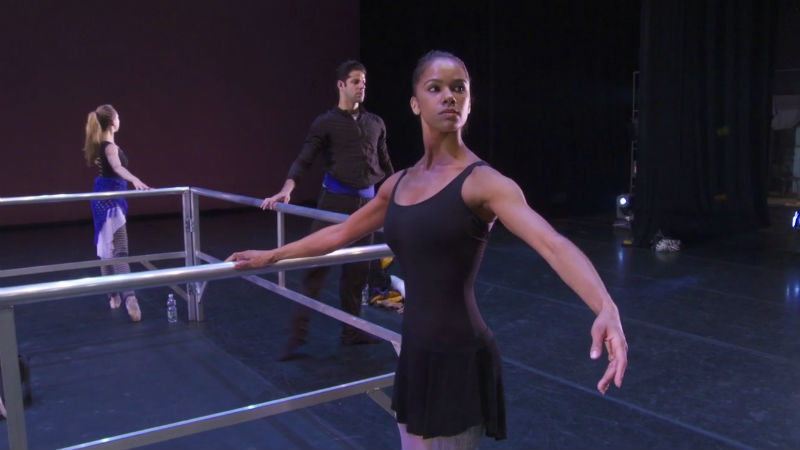From rough beginnings in San Pedro, CA to dancing center stage in New York, Misty Copeland’s rise to fame reads just like the plot of a fairy tale ballet. Nelson George’s documentary A Ballerina’s Tale, which premieres Feb. 8 on PBS, follows Copeland’s climb up the ladder to become the first African American female principal in the entire 75-year history of the prestigious American Ballet Theatre (ABT).
The dancer has been very vocal about her status as a lone African-American principal in a company of 80 dancers.
“I felt alone in a world that had become my home,” Copeland says in the documentary, which chronicles her recovery from a career-threatening injury after her lead performance in Igor Stravinsky’s Firebird to her triumphant return to the ABT stage. “I think that people think that sometimes I focus too much on the fact that I’m a black dancer. I’ve heard it from former principal dancers and major ballet companies who complain about my presence and my voice.”

Roberto Bolle & Friends. July 2014. (Photo: Courtesy Urban Romances, Inc.)
Copeland previously studied at the San Francisco Ballet School and serves as an inspiration to young dancers in the Bay Area.
“I think that Misty Copeland is an extraordinary artist — not because she is black, but because she is gifted and has worked very hard to refine her craft,” says Joanna Haigood, artistic director of Zaccho Dance Theatre based in San Francisco’s Bayview Hunters Point neighborhood. “But the most important point for me is that Misty Copeland’s story exposes how much work we need to do to diversify the field.”

